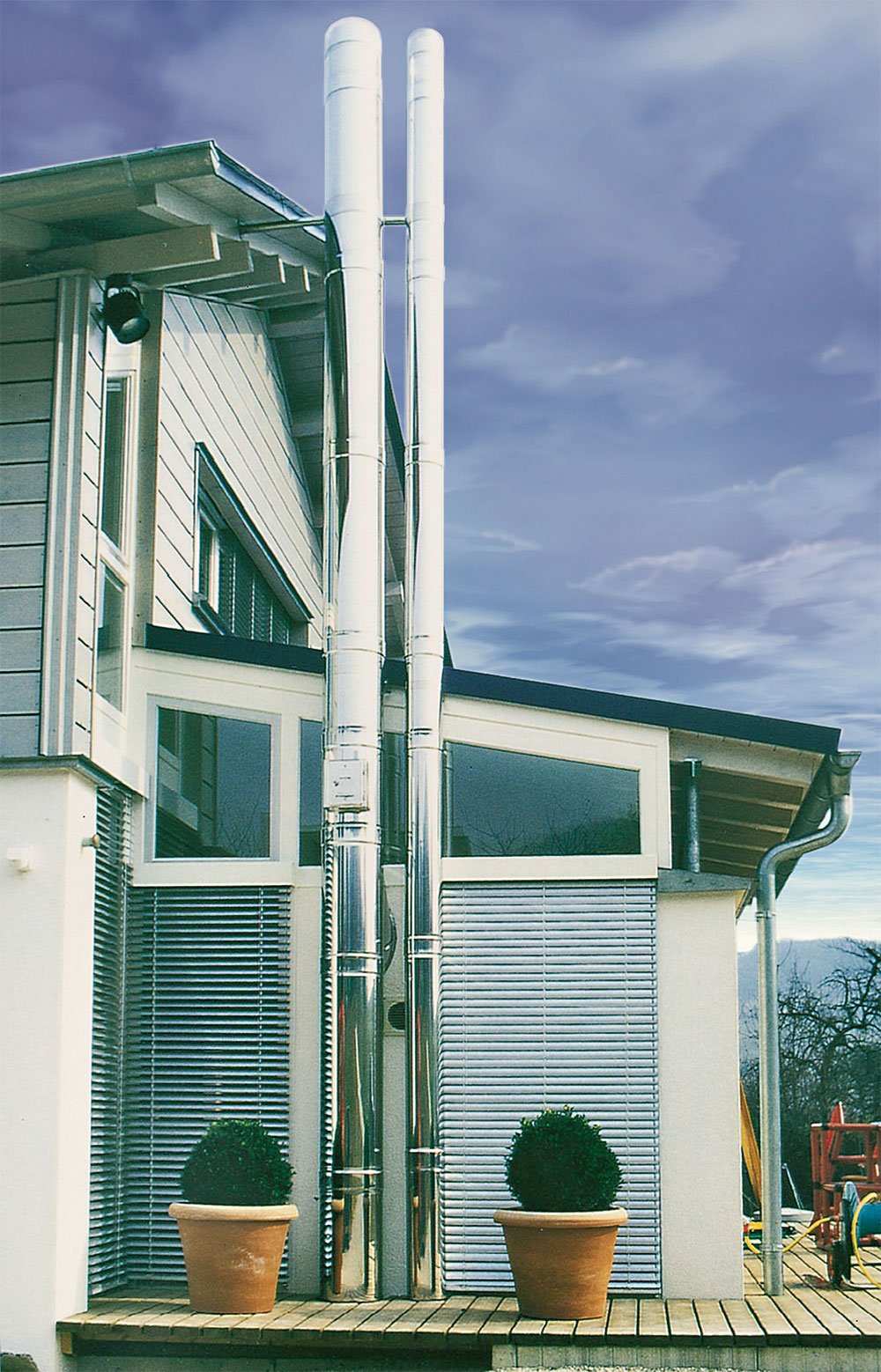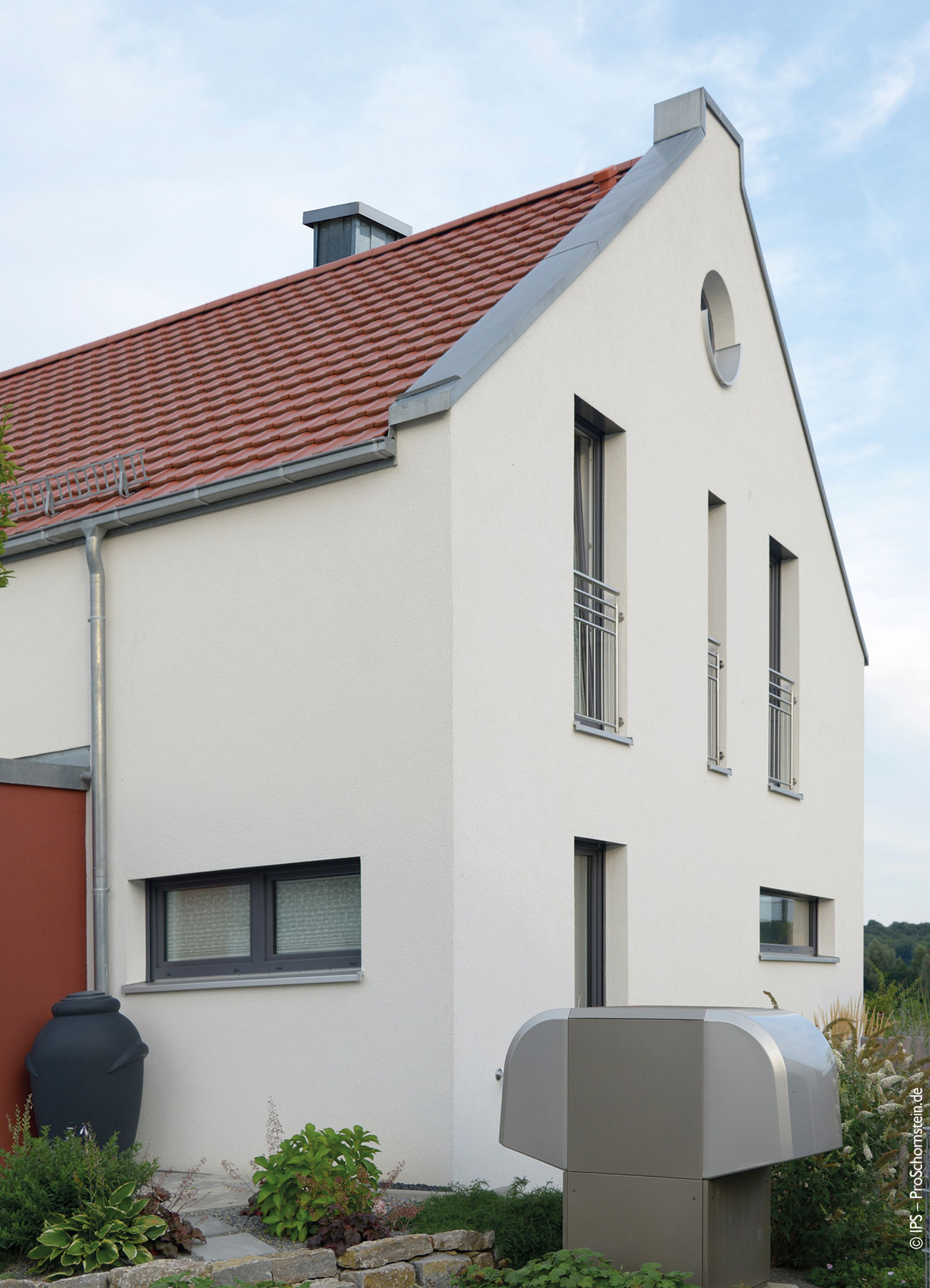The flue gas system is currently experiencing a renaissance: Ever since demand for heating systems and wood-burning fireplaces with solid fuels started increasing, flue gas systems have moved back into the focus of building owners and planners. As a basic requirement for many heating technologies, they must be optimally adapted to the type of firing in order to safely lead the flue gases into the open and at the same time protect the building structure from moisture and fire exposure. The early inclusion of the exhaust technology in the structural planning saves costs.
Differing technical requirements
Residential buildings should always have double chimneys so that a fireplace or stove can be connected in addition to the main heating. The heating technology and energy sources used determine the technical requirements for the chimney due to the different temperatures and composition of the flue gases, such as resistance to corrosion, condensation and soot fire. Stainless steel, ceramic, plastic and concrete are approved as materials for the chimney or the inner pipe, respectively.
Diverse for new builds and renovations
Both stainless steel and ceramic chimneys are considered to be versatile and particularly durable. They are highly resistant to high temperatures and acids and are therefore suitable for heating with all approved fuels. Both materials are suitable for use in new buildings, for retrofitting in existing buildings and for renovating existing chimneys. For over 2 decades, plastic flue pipes have been a proven all-round solution for gas and oil heating systems, heat pumps, CHP units, emergency power systems and fuel cells with particularly low flue gas temperatures ≤ 120 °C.
Further information about chimneys: https://www.proschornstein.de/


